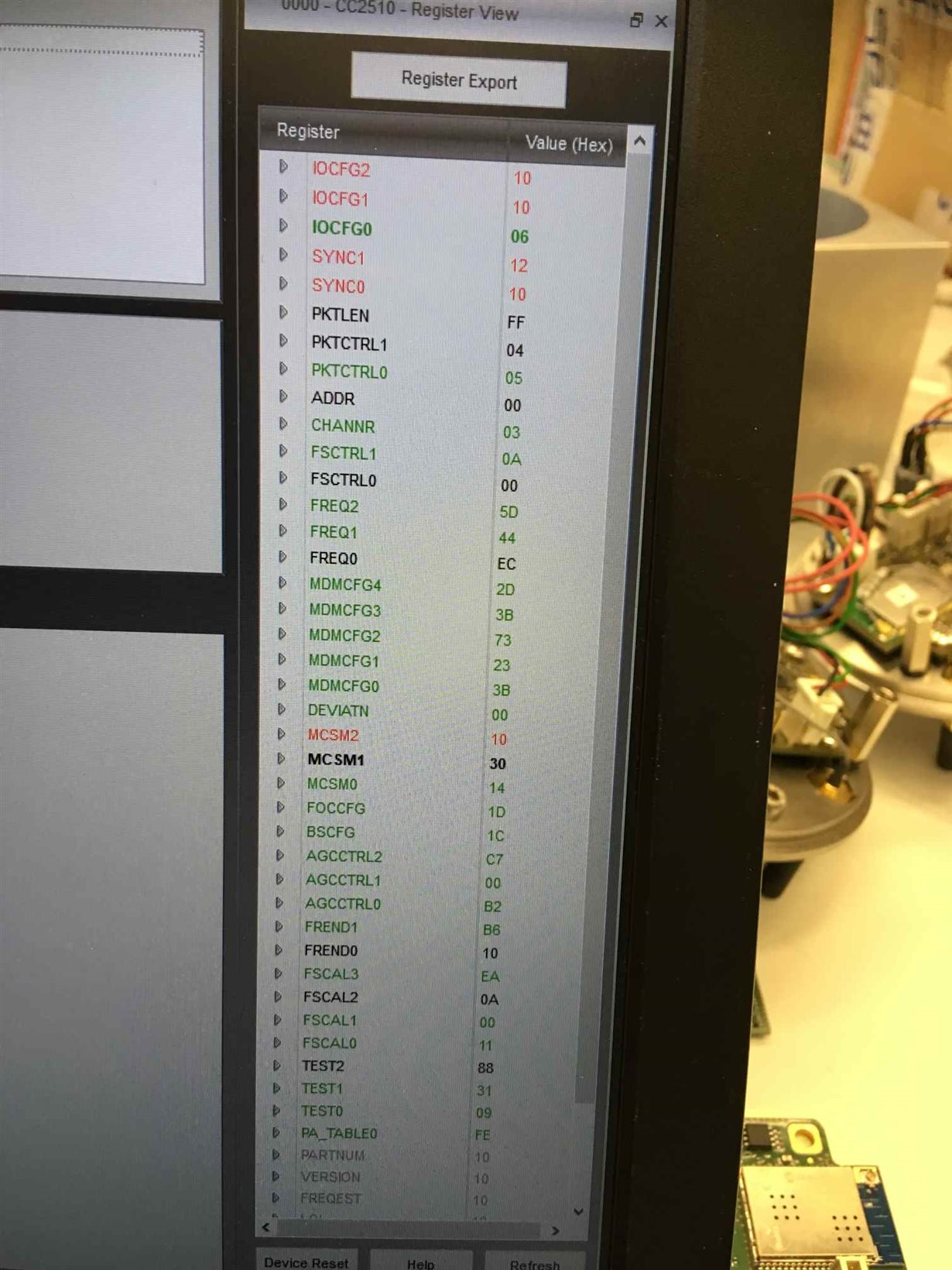Other Parts Discussed in Thread: CC-DEBUGGER
Dear all,
I was trying to flash a batch of cc2510 for one of our products and ran into problems.
we are using a cc2510 which is controlled by a pic32 in our device which basically has a special programming mode (our collaborator programmed) which should allow the cc2510 to be programmed using the debug interface.
We are using Smart RF Programmer to load a hex file on the chip and whatever configuration I use (fast or slow) I cannot transfer the program on the chip. If I use fast smart RF tells me that the erase step failed and if I use slow the readout of hex fails. If I read back what is on the chip into a file I basically get a bunch of 0 and 1. However the chip is detected and the smart RF programmer also identifies ist correctly as an cc2510.
The procedure itself works as I tried it with an older batch of the same device and writing the program on these chips was no problem.
Then I tried SmartRF Studio to communicate with the chip in an effort to find out more and when connecting to the chip I get the error message, that the chip is in an invalid state on startup.
The register view shows this:
Can somebody help me understand what the problem is with this batch of chips and if there is something I can do to actually program them? Any help would be greatly appreciated.
BR Klemens



